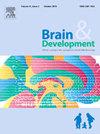运动技能和神经系统软体征:它们只是抽动障碍和原发性刻板运动障碍的临床差异还是不同病因的反映?
IF 1.3
4区 医学
Q4 CLINICAL NEUROLOGY
引用次数: 0
摘要
虽然抽动障碍和刻板运动障碍在儿科临床中通常是合并症,但它们的临床和病因学差异仍然知之甚少。目的探讨抽动障碍和原发性刻板运动障碍的临床特征,评价神经软体征和运动技能。方法采用《学龄期儿童情感障碍和精神分裂症儿童量表-现在版和终生版DSM-5》和《社会人口学和临床资料表》对儿童进行调查。临床医生完成了耶鲁整体抽动严重程度量表,重复行为量表-修订和神经学评估量表。精细运动技能测试采用九孔钉测试,大运动技能测试采用1分钟坐立测试,静平衡测试采用火烈鸟平衡测试,双侧协调性测试采用手指到鼻子测试。家长完成了康纳斯家长评定量表-修订短表和修订发展协调障碍问卷。结果抽动障碍患者20例,原发性刻板运动障碍患者20例,注意缺陷多动障碍患者13例,健康对照20例。初级刻板印象组的神经系统评价量表复杂运动行为排序得分显著高于健康对照组。初级刻板印象组的优势手在九孔测验中的表现明显低于抽动组。刻板印象儿童1分钟坐立测试成绩显著低于刻板印象儿童;发展性协调障碍修正问卷总分和分量表得分较高。发育协调障碍的风险也高于健康对照组。结论本研究结果为抽动障碍和原发性刻板运动障碍的不同发病机制提供了有价值的见解,为今后的神经生物学研究奠定了基础。本文章由计算机程序翻译,如有差异,请以英文原文为准。
Motor skills and neurological soft signs: Are they only clinical differences or reflection of distinct etiopathogenesis in tic disorder and primary stereotypic movement disorder?
Background
While tic disorders and stereotypic movement disorder are commonly comorbid in pediatric clinics, their clinical and etiological differences remain poorly understood.
Objectives
We aimed to investigate the clinical features that differentiate between tic disorders and primary stereotypic movement disorder by evaluating neurological soft signs and motor skills.
Methods
The Kiddie-Schedule for Affective Disorders and Schizophrenia for School Age Children-Present and Lifetime Version DSM-5 and Sociodemographic and Clinical Data Form were administered to the children. The clinician completed Yale Global Tic Severity Scale, Repetitive Behavior Scale-Revised and Neurological Evaluation Scale. Nine-Hole Peg Test was used for fine motor skills, 1-Minute Sit-to-Stand Test for gross motor skills, Flamingo Balance Test for static balance, Finger-to-Nose Test for bilateral coordination. Parents completed the Conners Parent Rating Scale-Revised Short Form and the Revised Developmental Coordination Disorder Questionnaire.
Results
Our sample consisted of 20 tic disorders, 20 primary stereotypic movement disorder, 13 attention deficit hyperactivity disorder patients, and 20 healthy controls. Sequencing of the complex motor acts scores of Neurological Evaluation Scale were significantly higher in the primary stereotypy group than in healthy controls. The primary stereotypy group demonstrated significantly lower dominant hand performance on the Nine-Hole Peg Test than the tic group. Children with stereotypy had significantly lower scores of 1-min sit-to-stand test; higher total and subscale scores of Revised Developmental Coordination Disorder Questionnaire. and higher developmental coordination disorder risk than healthy controls.
Conclusions
Our findings offer valuable insights into the distinct etiopathogenesis of tic disorders and primary stereotypic movement disorder, providing a foundation for future neurobiological research.
求助全文
通过发布文献求助,成功后即可免费获取论文全文。
去求助
来源期刊

Brain & Development
医学-临床神经学
CiteScore
3.60
自引率
0.00%
发文量
153
审稿时长
50 days
期刊介绍:
Brain and Development (ISSN 0387-7604) is the Official Journal of the Japanese Society of Child Neurology, and is aimed to promote clinical child neurology and developmental neuroscience.
The journal is devoted to publishing Review Articles, Full Length Original Papers, Case Reports and Letters to the Editor in the field of Child Neurology and related sciences. Proceedings of meetings, and professional announcements will be published at the Editor''s discretion. Letters concerning articles published in Brain and Development and other relevant issues are also welcome.
 求助内容:
求助内容: 应助结果提醒方式:
应助结果提醒方式:


